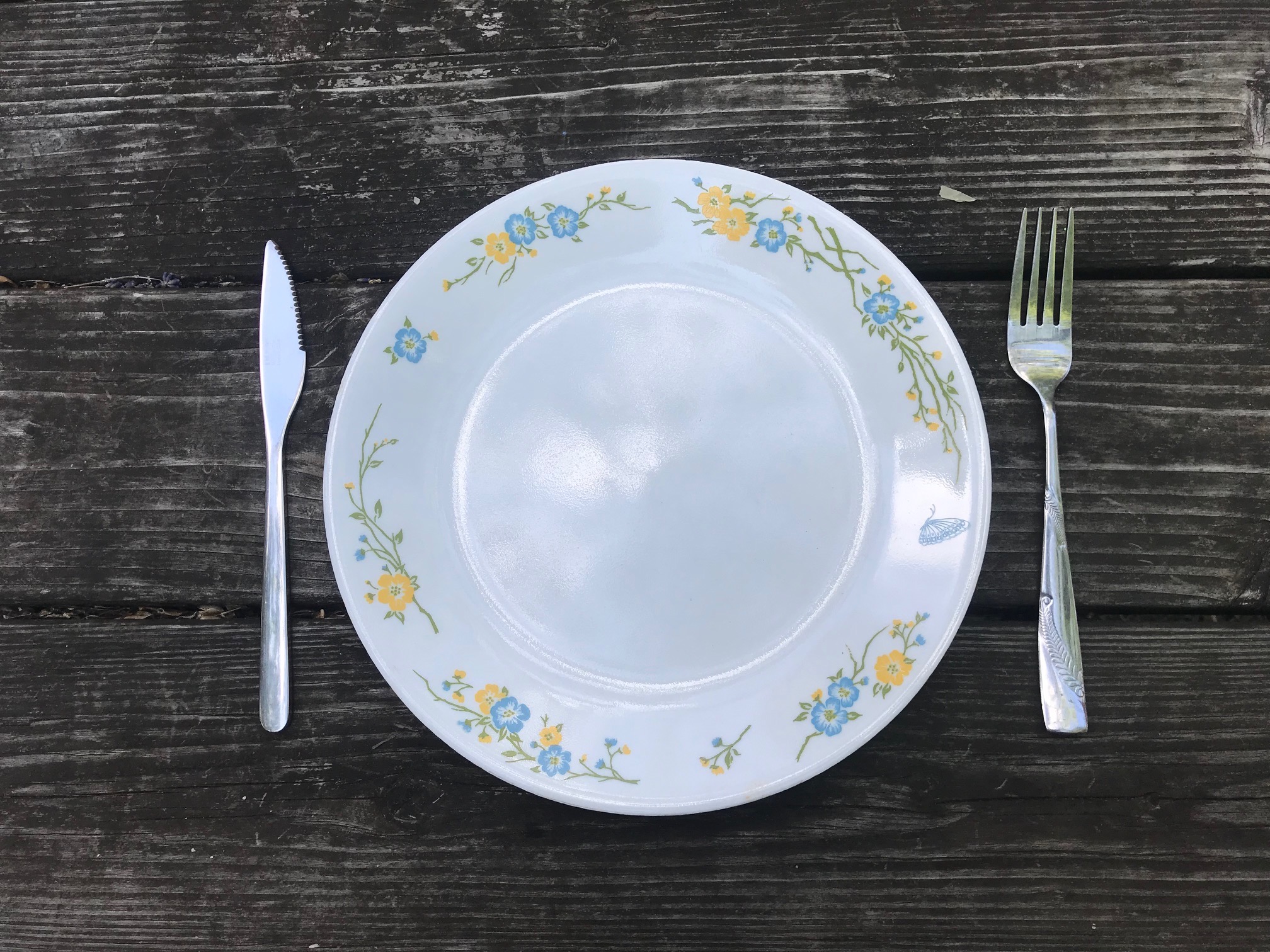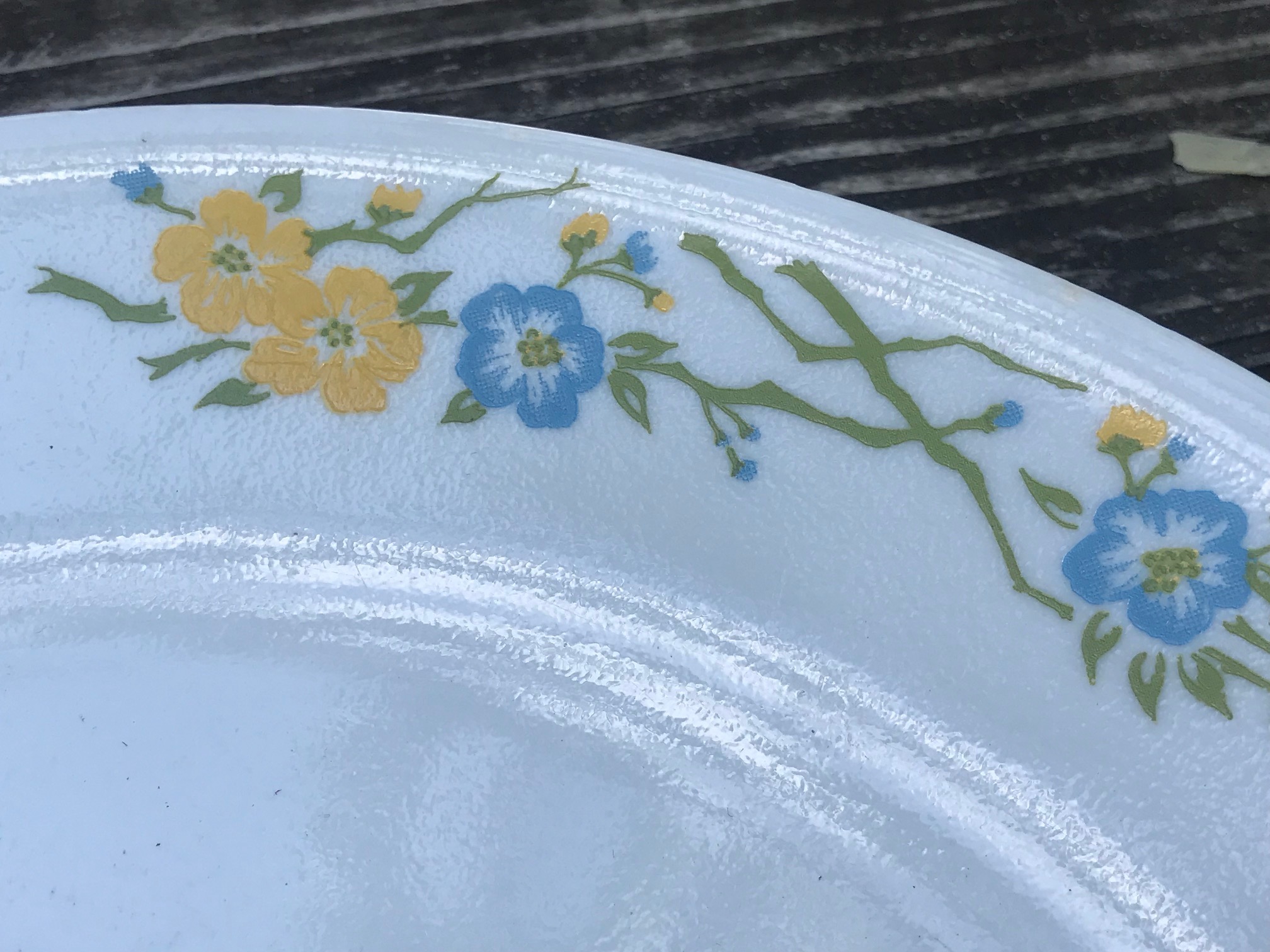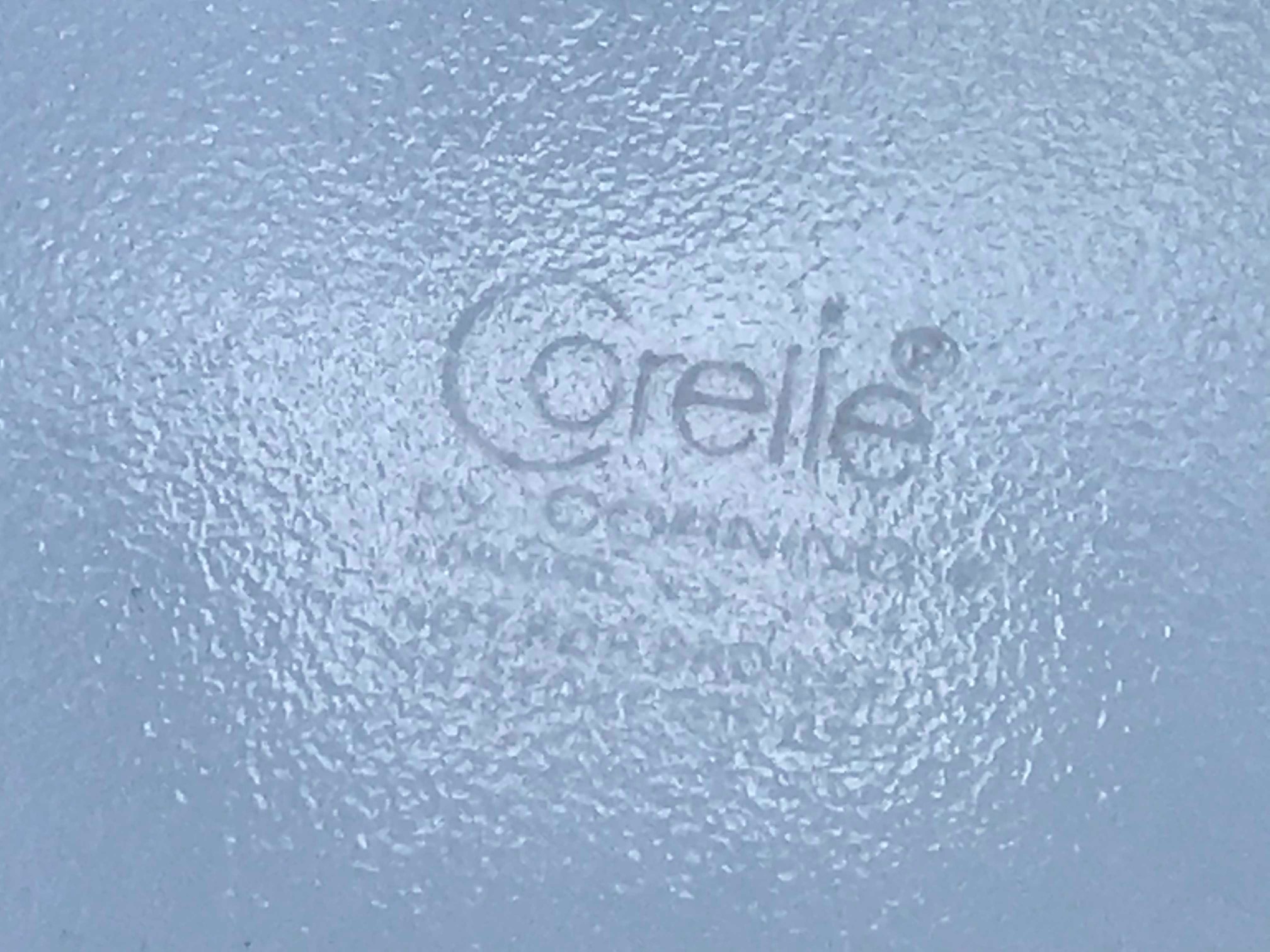Vintage Corelle Blue & Yellow Floral Dish With Butterflies: 41,500 ppm Lead (90 is unsafe for kids) + Cadmium
To see more Corelle pieces I have tested, click HERE.
Vintage Corelle Blue & Yellow Flower Pattern Dish With Butterflies (year of manufacture unknown)
For those new to this website:
Tamara Rubin is a multiple-federal-award-winning independent advocate for childhood Lead poisoning prevention and consumer goods safety, and a documentary filmmaker. She is also a mother of Lead-poisoned children (two of her sons were acutely Lead-poisoned in 2005). Since 2009, Tamara has been using XRF technology (a scientific method used by the U.S. Consumer Product Safety Commission) to test consumer goods for toxicants (specifically heavy metals — including Lead, Cadmium, Mercury, Antimony, and Arsenic). All test results reported on this website are science-based, accurate, and replicable. Items are tested multiple times to confirm the test results for each component tested. Tamara’s work was featured in Consumer Reports Magazine in February of 2023 (March 2023 print edition).
When tested with an XRF instrument, the painted decorative border on the food surface of this vintage Corelle plate was positive for a very high level of Lead. To see the full XRF readings for this exact plate, scroll down. Note: I don’t know the exact year of manufacture of this piece as it was purchased second hand at GoodWill. If you have information about the year of manufacture (or year-range) for this pattern, please comment here on this post.
To learn more about XRF testing, click HERE.
As a mother of Lead-poisoned children and as an environmental activist, I have taken the stance that there is no place for any amount of Lead on our dining tables. None at all.
It literally just takes a microscopic amount of Lead to poison a child (or any human for that matter), and as of the moment of publishing this piece, there is NO ONE (individual, company, educational institution, or other agency) studying the potential impact that eating off of Leaded vintage dishware has on the users (because no corporation stands to benefit financially from such a study). Consequently, as consumers, we need to err on the side of prudence and proactively remove all potential sources of Lead exposure from our homes ourselves, starting with our kitchens.
For a pretty Lead-free & Cadmium-free option, click HERE.*
These particular dishes tested positive for 41,500 ppm Lead.
For context, to better understand what this level of Lead means: The amount of XRF detectable Lead considered toxic in a newly manufactured item “intended for use by children” is anything 90 ppm Lead or higher in the paint, finish, or coating, and anything 100 ppm Lead or higher in the substrate.
Dishes (modern or vintage) are not considered items “intended for use by children,” and thus are not regulated for total Lead content (as detectable with an XRF) in the same way as toys and other similar children’s items (unless they are dishes expressly marketed and sold as baby dishes manufactured after 2010). In my opinion, dishes should be considered and regulated as intended for children’s use, too.
To read more about the concern for XRF-detectable Lead in dishware, click here.
Related: What should I do if my dishes are positive for high levels of Lead? Click HERE.
All tests reported on this website were done for at least 60 seconds each (unless otherwise noted) using an XRF instrument. The XRF instrument used for testing is a Niton XL3T, a scientific instrument specifically designed and intended expressly for testing consumer goods for Lead and other metals. The results are science-based, replicable, and accurate.
Decorative Edge/ Food Surface (image above):
- Lead (Pb): 41,500 +/- 1,200 ppm
- Cadmium (Cd): 659 +/- 44 ppm
- Zinc (Zn): 361 +/- 53 ppm
- Copper (Cu): 126 +/- 54 ppm
- Titanium (Ti): 9,349 +/- 504 ppm
- Zirconium (Zr): 2,896 +/- 124 ppm
- Platinum (Pt): 461 +/- 170 ppm
Plain White Center of the Plate/ Food Surface:
- Iron (Fe): 404 +/- 129 ppm
- Vanadium (V): 93 +/- 26 ppm
- Titanium (Ti): 127 +/- 33 ppm
To learn more about the concern for Cadmium (Cd), which is a known carcinogen, click HERE. XRF detectable Cadmium is considered toxic at levels as low as 40 ppm (and above).
As always, please let me know if you have any questions.
Thank you for reading and sharing this work!
Tamara Rubin
#LeadSafeMama
*Some links are Amazon affiliate links. If you purchase something after clicking on an affiliate link, Lead Safe Mama, LLC may receive a small percentage of what you spend at no extra cost to you. Thank you for supporting our independent consumer goods testing in this way! 
Never Miss an Important Article Again!
Join our Email List













Holy crap. I just found this page because I was trying to find the name of the pattern on my grandmother’s vintage dish set that I inherited. Looks like maybe these should go back in the china cabinet! Yikes! I certainly thank you for doing this research and posting it for others to find.
Thank you! Glad you found the site!
– Tamara
Is it true I should throw all my Corelli dishes away? I have owned them since 1984. Is Corell going to buy me some new dishes?
Thanks so much for doing the testing and sharing the results. I got this blue and yellow pattern (named “Flirtation”) for my wedding in 1984.
What took so long to advise the public by way of social media that this lead issue existed on correlle plates. I have used two of these patterns and I am concerned about the people I have fed using this unsafe dinnerware.
Frankly – corporations don’t feel they need to be held accountable for toxicants in their vintage products. When standards change they don’t feel like they should be required to inform the public that legacy products may be toxic. This article discusses a bit of an overview of the concern:
https://tamararubin.com/topics/does-vintage-and-new-functional-pottery-and-dishware-have-unsafe-levels-of-lead/
Tamara
I got this pattern as a wedding gift in 1983. I still use them as they are my favorite. Not happy to hear this news.
If the high lead content is in the pattern., Why wouldn’t the plane white be safest?
I got an still have this pattern from my bridal shower in January of 1982. I guess it’s finally time for new dishes. Thank you for the information.